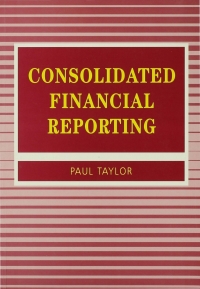Question
AP 7-1 (Interest Deductibility - Four Cases) Each of the following independent cases involves interest expense and determination of whether the interest is deductible for
AP 7-1 (Interest Deductibility - Four Cases)
Each of the following independent cases involves interest expense and determination of whether the interest is deductible for income tax purposes.
CASE A: Monica Lewis borrows $700,000 using her Toronto condo as collateral security. She uses the amount to purchase high-tech common shares that she anticipates will double in value during the coming year.
Unfortunately, instead of doubling, the stocks lose 60% of their value. They are sold during the year for $280,000 with all of the proceeds being used to pay down the loan. The balance of $420,000 ($700,000 - $280,000) is still outstanding at the end of the year. Monica is uncertain as to when she will be able to pay off this remaining amount. Can she continue to deduct the interest on the amount of the outstanding loan? Explain your conclusion.
CASE B: Gener Blake borrows $850,000 to purchase a duplex that he intends to rent to arm's-length tenants. After considerable efforts he was unable to find any tenants willing to rent either side of the property. He subsequently learned that the supply of such properties was well in excess of the demand. As a result he was forced to sell the duplex at a loss the following year for $600,000. Recognizing that the market for duplex rentals is weak, he used the sale proceeds to purchase two single family rental properties, the first for $250,000 and the second for $350,000.
CASE C: Perry Carson acquires a rental property for $575,000, 100% financed with a bank loan. Several yeas later, when the bank loan has been paid down to $500,000, he sells the property for $825,000. He uses the proceeds to acquire two other rental properties, the first for $275,000 and the second for $550,000. The bank loan is maintained with the balance remaining at $500,000. Explain how the $500,000 balance of the loan can be allocated to the two properties.
CASE D: Thomson Fraser has always dreamed of owning a Rolls Royce SUV, which costs $525,000. His bank has agreed to finance the purchase with a loan that bears interest at 7.5%
However, he can borrow the same amount using a margin loan against the investments in his substantial trading account. The interest rate on such borrowing would only be 4%. He decides to take advantage of the lower interest rate to purchase the car. Since the loan is connected to his income earning investments as collateral, he assumes that he will be able to claim a deduction for any interest. Is he correct? Explain your conclusion. If you conclude that the interest would not be deductible, is there some tax advice you could provide that would allow the interest to be deductible?
Step by Step Solution
There are 3 Steps involved in it
Step: 1

Get Instant Access to Expert-Tailored Solutions
See step-by-step solutions with expert insights and AI powered tools for academic success
Step: 2

Step: 3

Ace Your Homework with AI
Get the answers you need in no time with our AI-driven, step-by-step assistance
Get Started


